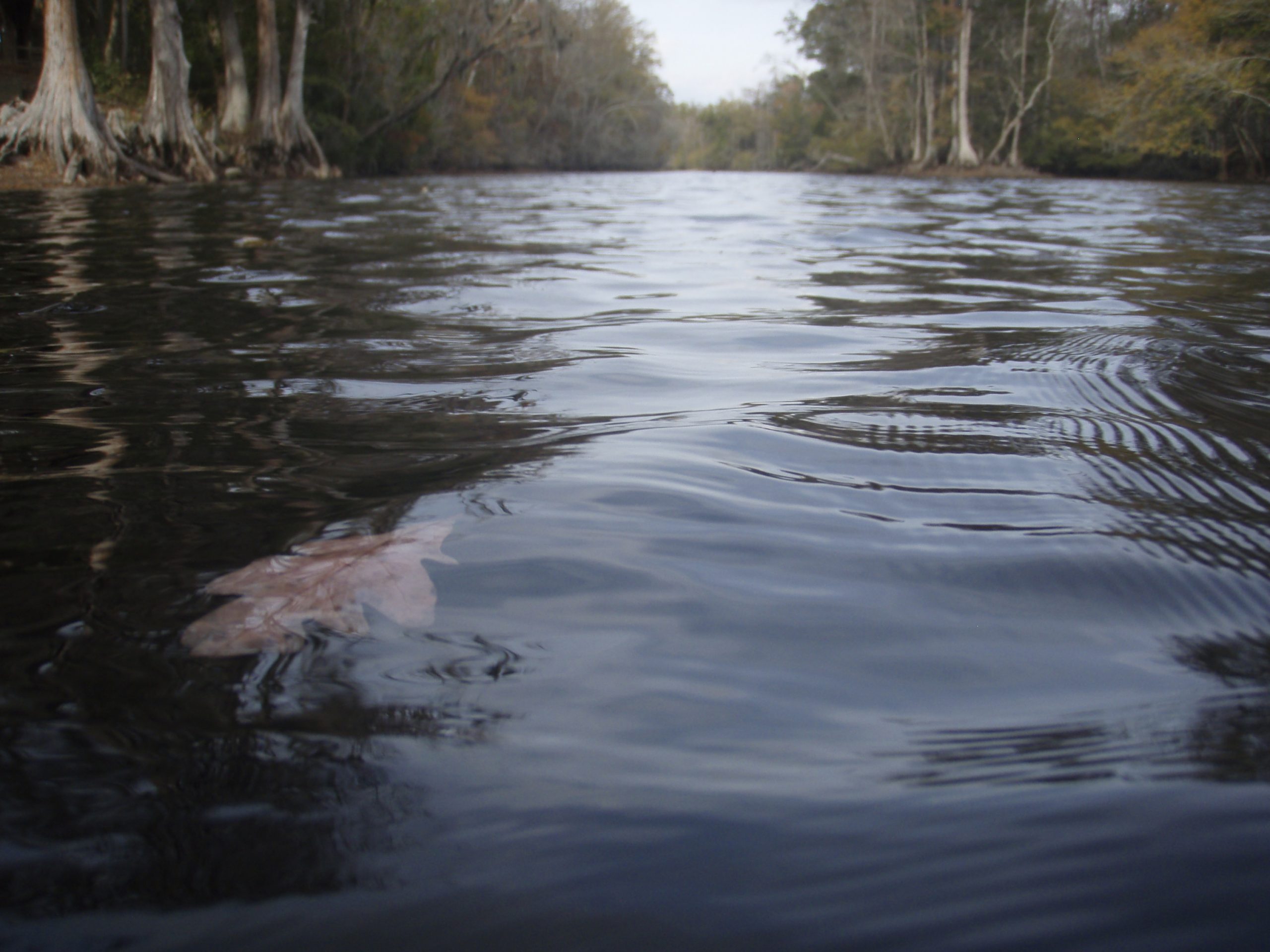N.C. Tribes Faced Obstacles to Atlantic Coast Pipeline Water Planning, Study Shows

The now-canceled Atlantic Coast Pipeline project would have crossed streams and wetlands important to Indigenous people in North Carolina, raising concerns from tribes about negative impacts to water quality and how their voices were unheard in pipeline planning.
In the journal Water, Ryan Emanuel, a professor at North Carolina State University and Lumbee Tribe member, co-authored a case study that evaluated the potential impacts the pipeline would have had on water quality and the challenges faced by Indigenous people in North Carolina during pipeline planning.
The Abstract spoke to Emanuel about the case study:
TA: What were some of the potential impacts of the pipeline for water that concerned members of tribes in North Carolina?
Emanuel: Many of the water impacts would have occurred during construction. As you dig trenches and disturb the land, you increase sedimentation, which can drastically alter stream environments. Other impacts come from clear-cutting of forested wetlands adjacent to streams near pipeline crossings. Removing wetland forests also has implications for water temperature.
Cumulatively, all of those things combine to change the aquatic environment in ways that are detrimental to plants, animals and people who rely on the water for various purposes.
This ties in a belief that some indigenous people hold of water as a being. This is a common sentiment expressed not just in my tribe. Native American tribes across North America and Indigenous peoples throughout the world often conceptualize rivers as beings. How do we ask for and obtain consent from the river? What does it mean to learn that someone is planning to harm a loved one in this way whether you like it or not?
The Abstract: Historically, what is the significance of water to the Lumbee?
Emanuel: In Lumbee history, our people were isolated because the terrain was inhospitable to outsiders. There’s a long colonial record of outside powers unable to navigate through this region, getting lost, or chalking up our territory in eastern North Carolina to one giant swamp where no one would want to go.
Today, we honor that past by taking care of swamps and wetlands in any way that we can.
TA: Were there other concerns about the pipeline raised by tribes in North Carolina?
Emanuel: Whether or not the developers planned it, the route they chose through North Carolina would have been through traditional and contemporary areas of three tribes: the Lumbee, Coharie and Haliwa-Saponi.
For Lumbee people, one of the biggest impacts would have come from the decision to put the southern terminus in Prospect, a rural community in Robeson County. Prospect is one of the oldest and most prominent Lumbee communities.
The terminus in Prospect would have included a large above ground metering station where the pipeline would have tied into the rest of the eastern N.C. pipeline network. This place, with its gorgeous night sky, would have experienced light pollution from a telecomm tower and aviation beacon included in the station plan.
TA: What were some of the obstacles faced by the Lumbee to participating in pipeline planning?
Emanuel: It’s hard to talk about Native American issues in the Southeast without considering the interests of non-federally recognized tribes. Most of the Native Americans in North Carolina belong to non-federally recognized tribes.
Recommendations and best practices of the federal government advise permitting agencies to consult with native peoples regardless of their federal recognition status, but the letter of the law only compels agencies to consult with tribes that have federal recognition.
Agencies that ignore these recommendations, and stick to the minimum legal standard, are creating barriers for state-recognized tribes that may have a big stake in the outcome, but can’t get their foot in the door.
During the pipeline planning, the Lumbee Tribe was in the middle of a federal recognition bid. There was some hesitation for the tribe’s leaders to weigh in on a highly politicized issue while trying to build a consensus around federal recognition.
TA: What were the issues with timing?
Emanuel: When developers reached out to tribes it was too late to make a difference in planning decisions. Moreover, requests for locations of sacred sites or culturally important places that could be affected by the pipeline were narrow requests that did not cover the range of concerns that native peoples had.
TA: What was the issue of color blind planning?
Emanuel: The developers described their initial pipeline planning as blind to demographic or socioeconomic factors. This “color blind” planning is problematic, because it risks reinforcing racial or socioeconomic inequities that have existed for decades or centuries.
In the Southeast, for example, a pipeline route may encounter large pockets of Native American or African-American people who have already been exposed to historic patterns of discrimination for other pipelines, or for highways, landfills, etc.
TA: What lesson could be learned?
Emanuel: North Carolina and many other states with large Native American populations desperately need well-articulated, state-level tribal consultation policies.
All of the tribes that I discuss in this paper are recognized as native nations by the state of North Carolina. We could ask ourselves: What does it mean for North Carolina to acknowledge these tribes? When there are major decisions to be made that involve their rivers and territories, are we going to seek their advice and – ideally – their consent?
- Categories:


